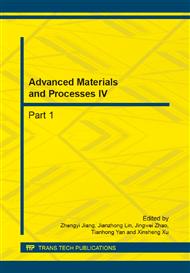p.155
p.164
p.168
p.176
p.180
p.184
p.188
p.192
p.197
The Effect of Air Knife Flow Rate on Coating Weight and Thickness for a Hot Dipping Process Simulator
Abstract:
A series of air knife flow rate were conducted by a hot dipping process simulator in laboratory to study its effect on coating weight and thickness. The research results show that, when the experimental steel were immersed for 3.5s in a Zn-0.24%Al zinc bath, with atmosphere of N2-10%H2 and dew point-60°C in the whole simulation, air knife flow rate (FR) was a key factor for coating surface quality. When FR was precisely controlled by the simulator from 200~500 l/min, the coating weight and thickness decreased significantly from 159.68 to 56.19 g/m2 and 17.45 to 7.84 μm. In which the decreasing line was more obvious when FR increased from 300 to 400 l/min, that the coating thickness had a dramatic decreasing from 18.08 to 11.07μm.
Info:
Periodical:
Pages:
180-183
Citation:
Online since:
September 2014
Authors:
Price:
Сopyright:
© 2014 Trans Tech Publications Ltd. All Rights Reserved
Share:
Citation:


